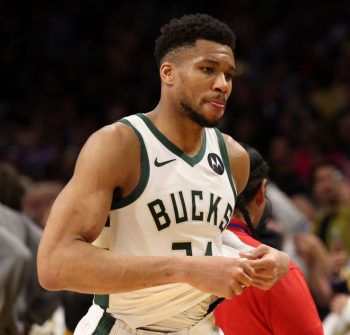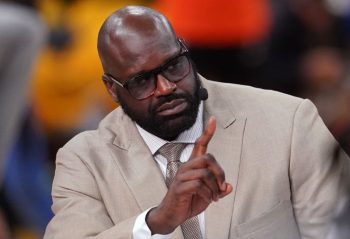NBA
NBA Daily: Mavericks Reacclimating Kristaps Porzingis From The Outside In

Any doubt surrounding the Dallas Mavericks’ blockbuster trade for Kristaps Porzingis had nothing to do with his play.
The No. 4 overall pick in 2015 proved draft-night boos foolish during an eye-popping rookie season that seemed to establish him as the New York Knicks’ long-awaited, homegrown franchise player. Porzingis made subtle strides as a sophomore, adjusting his shot chart to include more three-pointers and attempts at the rim, before accelerating his developmental timeline and suddenly living up to his All-NBA potential over the first half of the 2017-18 season. He couldn’t sustain a blistering start that was so good it prompted early-season MVP talk, but averages of 22.7 points, 6.6 rebounds and 2.4 blocks per game nevertheless made it clear Porzingis was bound for true stardom – if he wasn’t there already.
All that progress came to a crushing halt on Feb. 6, 2018, when Porzingis cut backdoor for a powerful dunk on a trailing Giannis Antetokounmpo that caused him to land awkwardly and clutch his left knee as he writhed in pain on the Madison Square Garden floor. The worst fears of the Knicks and their success-starved fan base were confirmed shortly thereafter, when it was announced that Porzingis had suffered a torn ACL, ending his season and putting his future in jeopardy.
Porzingis’ injury would have been considered a blip for almost any young player. A torn ACL isn’t anything close to the career-threatening injury it was even just a decade ago. Most players return to the floor well within a year of suffering the injury, and all are expected to eventually regain their initial level of athleticism.
Porzingis was the exception to those updated rules. Especially tall players have a long history of reacting poorly to serious lower-body injuries, and Porzingis is a physical anomaly at 7-foot-3 with rare mobility and overall coordination. If his all-around athleticism was even marginally affected by invasive knee surgery, just how good could Porzingis be?
The height of Porzingis’ readjusted ceiling remains a question mark two exhibition games into his playing career with the Mavericks. He’s struggled to shoot the ball from deep after 20 months removed from the NBA game, and it stands to reason he’s more likely to re-injure his knee after going under the knife. But concerns that Porzingis has lost explosiveness as a result of his torn ACL are almost long gone, and more importantly, those about his ability to hold up physically have been lessened by how Dallas has used him.
It would be remiss to submit that Porzingis is all the way back athletically, even though he insisted on Media Day he’s “110 percent.” The Mavericks are planning to load manage Porzingis in 2019-20, perhaps sitting him for either end of all back-to-backs, for a reason.
Still, it’s wildly encouraging to see Porzingis, in his exhibition debut against the Detroit Pistons, throwing down the type of from-nowhere tip dunk he made seem routine during his ill-fated time in New York. A few minutes later, he withstood a reckless shove to finish a lob from Luka Doncic, even landing hard on his left leg no worse for wear.
But just because Porzingis avoided re-injury on that dangerous play hardly means Dallas should be more comfortable putting him at risk. In fact, it provides further justification for Rick Carlisle’s apparent plan of easing him back into NBA action from the outside in.
Comparing young players to all-time greats is an exercise in disappointment. Porzingis isn’t Dirk Nowitzki, and never will be. The Mavericks would be absolutely thrilled if he enjoyed half the extent of individual success that propelled Nowitzki to 12 All-NBA selections and 14 All-Star Games. But just because Porzingis isn’t Nowitzki hardly means Carlisle won’t use him in much the same way he did the greatest player in team history.
For now, that means taking advantage of Porzingis’ deep shooting range from the frontcourt by spacing the floor across four and sometimes five positions. Porzingis has spent most of his time beyond the arc through his first two exhibition games, running high and side ball screens with Doncic, popping back on off-ball screens he sets for catch-and-shoot chances and lagging behind in transition for trail threes.
The numbers, as could be expected from a player who last played competitive NBA basketball nearly two years ago, aren’t great. In 43 total minutes so far, Porzingis has scored only 29 points on 31 shots, including 4-of-16 shooting from deep. But the result doesn’t matter nearly as much as the process for Porzingis, a reality that should extend into the regular season, and there’s ample reason to believe he’ll thrive offensively once he re-acclimates to basketball being played at its highest level.
It’s not Porzingis’ physical tools nor package of offensive skills that makes him special, but the layered scoring opportunities that blend of attributes presents. Leave him free, and Porzingis is the type of shooter who can get hot from three in a hurry. Close-out too aggressively, and he’ll put the ball on the floor to create a cleaner look.
Porzingis started at center on Friday against the Milwaukee Bucks, and opened next to Maxi Kleber up front two days earlier versus the Pistons. Regardless of what position he’s played, Dallas has mostly used Porzingis as a screener and weak-side spacer, letting him finish plays rather than start them.
Putting a player like Porzingis in a box, though, ignores the versatility that led Kevin Durant to famously dub him “Unicorn.” When he’s been on the floor with another big, the Mavericks have occasionally treated Porzingis like a wing or guard, running him off screens away from the ball.
Purists need not worry: Porzingis hasn’t completely abandoned the post. His touches on the block have been few and far between through his first two exhibition games, and have shrewdly come after he sets screens on the perimeter, allowing him to roll into post position instead of fighting hard to establish it. Porzingis’ right-shoulder turnaround jumper is nearly as unblockable as Nowitzki’s iconic one-footed fadeaway. It’s not going anywhere.
But Dallas clearly plans to utilize Porzingis from the perimeter first and foremost, a development that doesn’t just mitigate the physical toll he’s bound to take, but also leverages his unique abilities as a shooter and driver to make the game easier for Doncic and his teammates. No team in the league will benefit more from pitch-perfect spacing this season than the Mavericks. Porzingis, obviously, is much more than a floor-stretcher, but he can get his own playing mostly from the outside while teammates – including likely starter Dwight Powell, one of the best roll men in basketball – reap the rewards of him being on the court.
In time, Dallas will ask more of Porzingis offensively. He’s too gifted an individual scorer for that not to happen. But as he gets his feet under him in the season’s early going and perhaps for its duration, Porzingis will offer more than enough by his presence alone to make the Mavericks dangerous. And if he grows comfortable quickly, don’t be surprised if Carlisle affords Porzingis more responsibility, perhaps lifting his team to legitimate playoff contention in the process.











